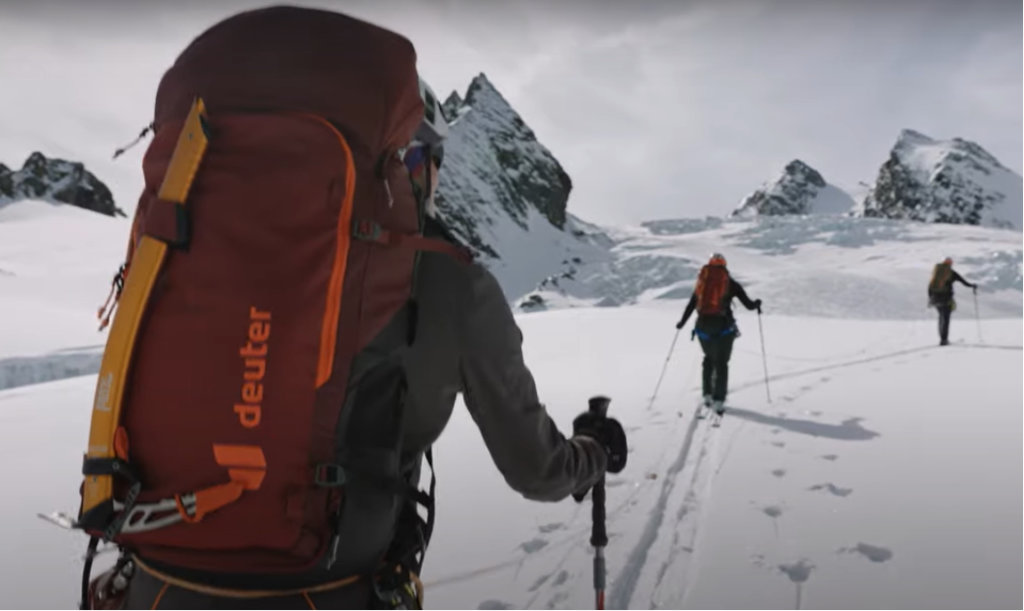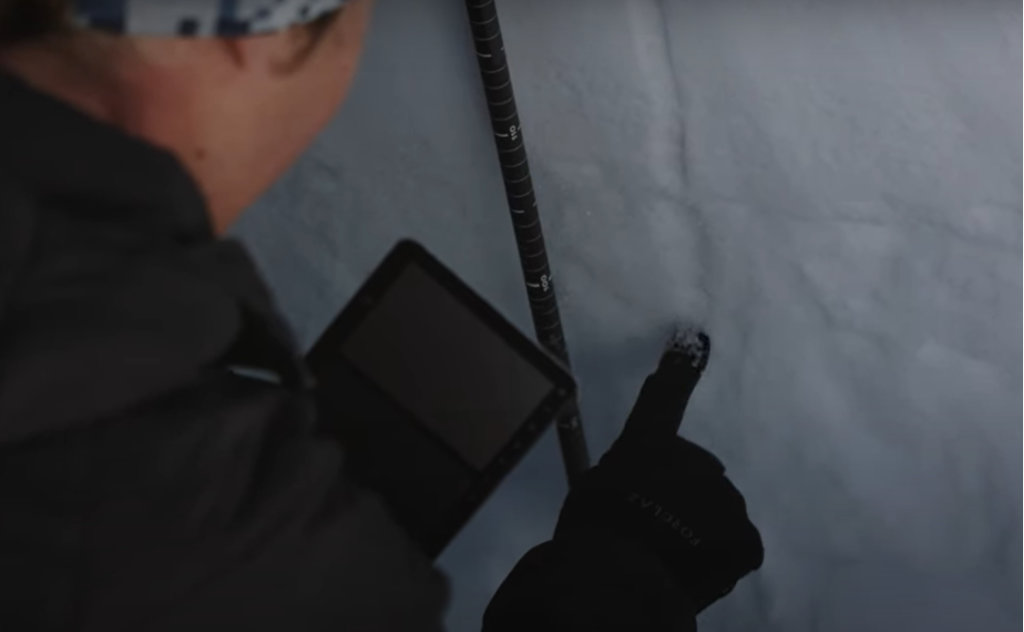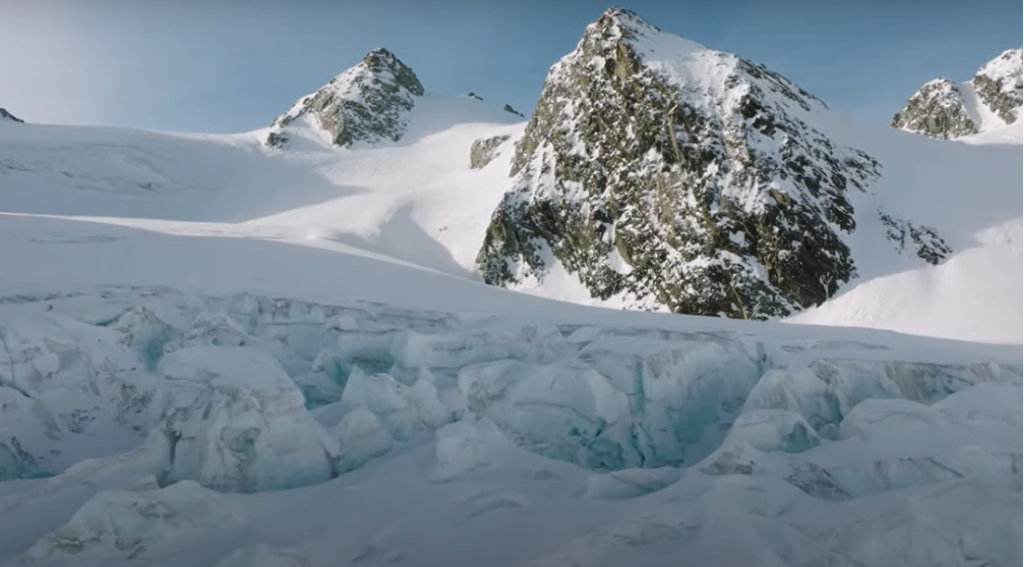Climate change is a reality that directly impacts the world of winter sports. The documentary “Every degree counts: a short documentary about the future of winter sports“, produced by deuter, takes us on a journey through the French Alps to better understand how each degree of temperature influences the future of snow activities.
In this article, I’ve summarized the documentary and highlighted some of the key points discussed.
Watch the documentary about climate change and winter sports
Exploring the mountains
In the heart of the French Alps, the team embarks on a multi-day ski trip in the Haute Maurienne area. The challenges of finding good skiing conditions in spring are evident. Ben Reuter, a mountain guide and avalanche forecasting expert; Neige Calonne, a snow and climatology researcher; and Marion Reveillet, a glaciology specialist, make up the team — all passionate about skiing and the mountains.

Snow changes that affect winter sports
During the trip, the team examines different types of snow, such as graupel (pellet snow) and powder (fresh snow), to better understand skiing conditions and assess avalanche risks. Risk assessment is crucial, and they perform a compression test to determine the stability of the snowpack. They find that the persistent weak layer is buried deep, posing no significant risk for skiing in the chosen area.


Understanding snow types: Graupel and Powder
Graupel, also known as soft hail or snow pellets, forms when snowflakes come into contact with supercooled liquid water droplets. The droplets freeze instantly around the snowflakes, creating small ice spheres. These spheres are soft and fragile and lack the crystalline structure typical of snowflakes.
Powder, or fresh snow, refers to newly fallen snow that is light, fluffy, and dry. It’s the ideal snow for skiing because it offers a soft and smooth surface. Powder snow is made up of snow crystals that have not yet been compacted, melted, or refrozen. This type of snow is highly valued in winter sports for providing an easy, smooth, and controlled glide when skiing or snowboarding.
Main differences between Graupel and Powder
Graupel: Formed by the aggregation of supercooled water droplets around snowflakes, resulting in soft and fragile ice pellets.
Powder: Newly fallen, light, fluffy, and dry snow, ideal for winter sports because of its softness and easy handling.
These different types of snow have important implications for skiing safety and quality. Graupel may indicate unstable snow conditions, increasing the risk of avalanches, while powder snow is generally considered safe and excellent for winter sports.
The impact of climate change on winter sports
The documentary discusses how climate change raises the rain-snow line, resulting in more wet snow, which alters the properties of the snowpack and accelerates melting. Marion explains how glacier mass balance is measured and how recent years have shown an unprecedented loss of mass due to low snowfall and high summer temperatures.

Retreat of the glaciers
The visible retreat and loss of glacier mass serve as a clear reminder of the reality and impact of climate change. Anyone visiting the mountains can see the difference from one year to the next. Marion points out that even in an optimistic temperature scenario, 80% of the glaciers in the Alps will disappear by the end of the century.


The importance of avalanche forecasting
Accurate avalanche forecasts are crucial for public safety, although they come with inherent uncertainties. The team emphasizes the responsibility and precision required when making these forecasts. It is essential that hazard descriptions are consistent and detailed to ensure people’s safety.
Reflections on climate change and a call to action
The deuter documentary reminds us that every degree of temperature matters when it comes to preserving glaciers and, consequently, the winter sports we love so much. Although Brazil does not have glaciers, it’s important to remember that the world is a single, interconnected system. Climate change affects us all in different ways, and preserving glaciers is crucial for maintaining global climate balance. Therefore, it’s essential that all of us, as mountain sports enthusiasts, stay aware and take action in the fight against climate change. Preserving glaciers means ensuring that future generations can enjoy the same passion for snow that we have today.

Summary of key points
- Glacier mass loss: Glaciers in the Alps are rapidly disappearing due to climate change.
- Spring challenges: Finding good skiing conditions in spring is difficult due to climate variability.
- Snow assessment and avalanche risk: Compression tests help determine the stability of the snowpack.
- Changing snow properties: Increased wet snow alters the snowpack and accelerates melting.
- Glacier monitoring: Measurements show unprecedented mass losses in recent years.
- Avalanche forecasts: Accuracy and responsibility are essential for public safety.
- Visible impact: Glacier retreat is a clear reminder of the reality of climate change.
- Action needed: Mitigating climate change is crucial to preserving winter sports.
We hope this article inspires and motivates Gear Tips readers to reflect and take action toward a more sustainable future for winter sports and outdoor activities in general. Leave your comment below and share your thoughts on how we can help preserve glaciers and nature!
This post is also available in: Português (Portuguese (Brazil)) Español (Spanish)
